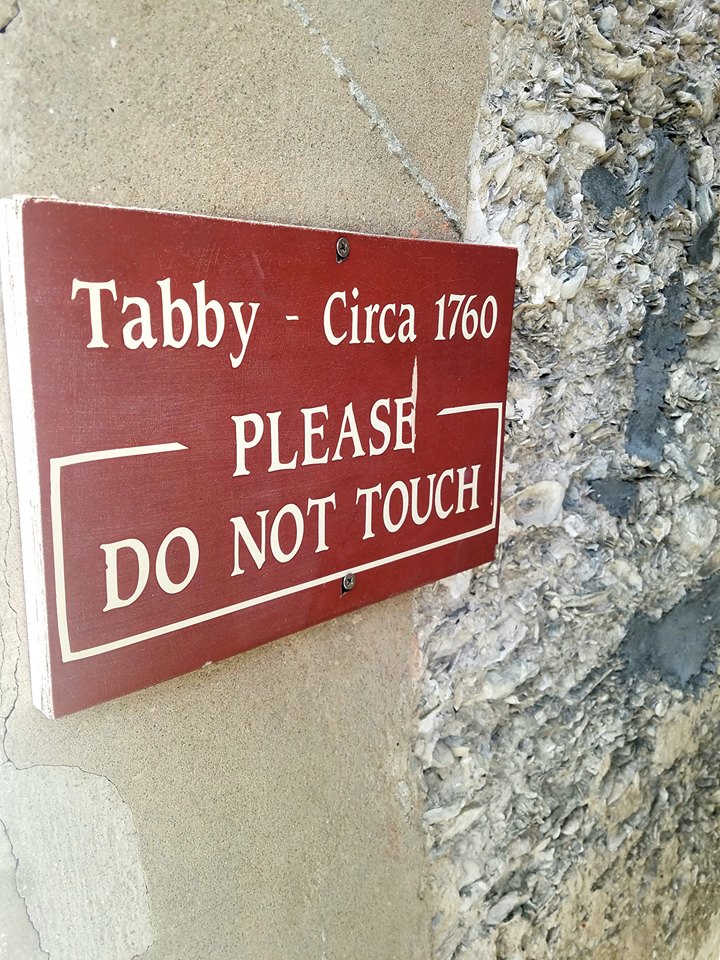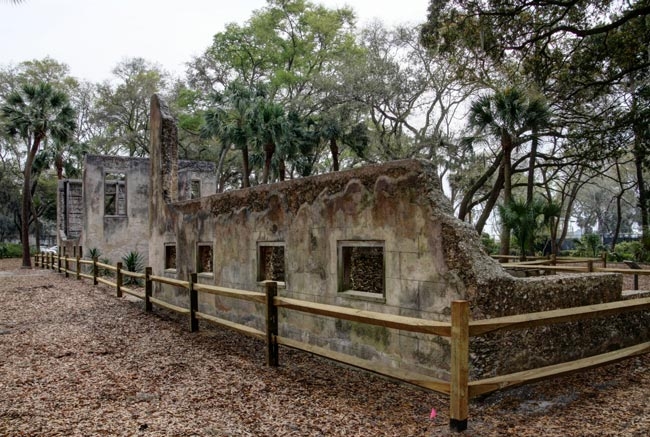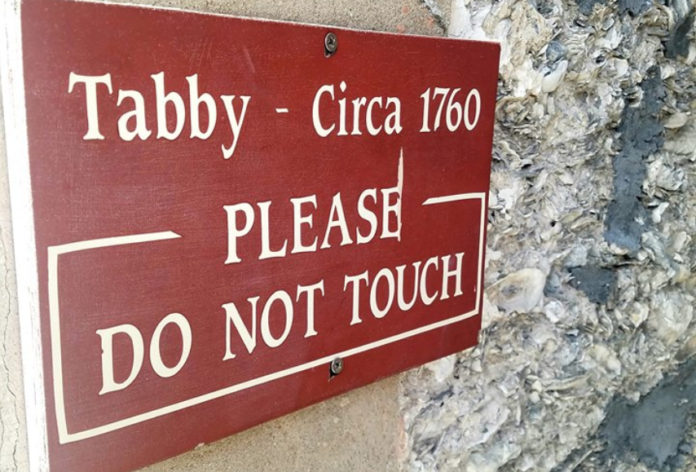The Beaufort area is home to many old forts and historic buildings that were made of tabby concrete hundreds of years ago. Of historical significance today, Beaufort County is home the highest concentration of tabby in the United States. In fact, you could say that Beaufort SC is a city made of tabby.
Tabby was introduced by the Spanish in the seventeenth century as a low-cost and accessible building material, because you have to work with what you have around you.
Tabby is a type of concrete made by burning oyster shells to create lime, then mixing it with water, sand, ash and broken oyster shells. It was used by early Spanish settlers, then by English colonists, in the Southeast, primarily in coastal South Carolina and Georgia.
Although no tabby structure securely dated before 1730 survives above ground in South Carolina or Georgia, it is clear that tabby played an important role in shelter and defenses for early Europeans. Other durable building materials, such as brick and stone, were not easily available, especially in the Sea Islands, which lacked outcrops of clay and rock, according to the SC Encyclopedia.
Recent research cited indicates that tabby manufacture was understood around Charleston before 1726, but it did not appear in Beaufort County until construction began in 1731 at Fort Frederick on the Beaufort River. Eventually it became ubiquitous to Beaufort County, where it was used in fortifications, houses, stores, and a variety of outbuildings.

You will find tabby today in many places around the area.
The Beaufort Arsenal, the Chapel of Ease, the Barnwell-Gough House, Tabby Manse, the Saltus House, the Parish Church of St. Helena and the Verdier House on Bay Street are all made from tabby; as is the very seawall that protects the Old Point neighborhood in downtown Beaufort at the end of the Woods Memorial Bridge.
Other tabby structures can be found in Port Royal at Fort Frederick and at other locations on St. Helena, Dataw, Callawassie and Hilton Head Islands.
A major example of tabby

One of the largest and most intact sets of tabby structures is the Sams Plantation Complex Tabby Ruins on Dataw Island. The site, possibly built upon and occupied well before 1783. It includes the ruins and/or archaeological remains of at least 12 tabby structures. They include the main plantation house, a rectangular enclosure consisting of tabby walls, a large tabby kitchen, and five tabby slave quarters.

Also on the property were a variety of tabby dependencies including a barn/stable, a smoke house or blade house, a well/dairy house, and a well. The property also includes the Sams family cemetery and Episcopal chapel enclosed by high tabby walls.
As you can see, you’ll find tabby all over the Beaufort area.
But, please note, while you are enjoying a part of Beaufort’s vast history up close and personal, these structures are indeed very old, and therefore, quite fragile.
Handle them with care.










